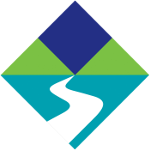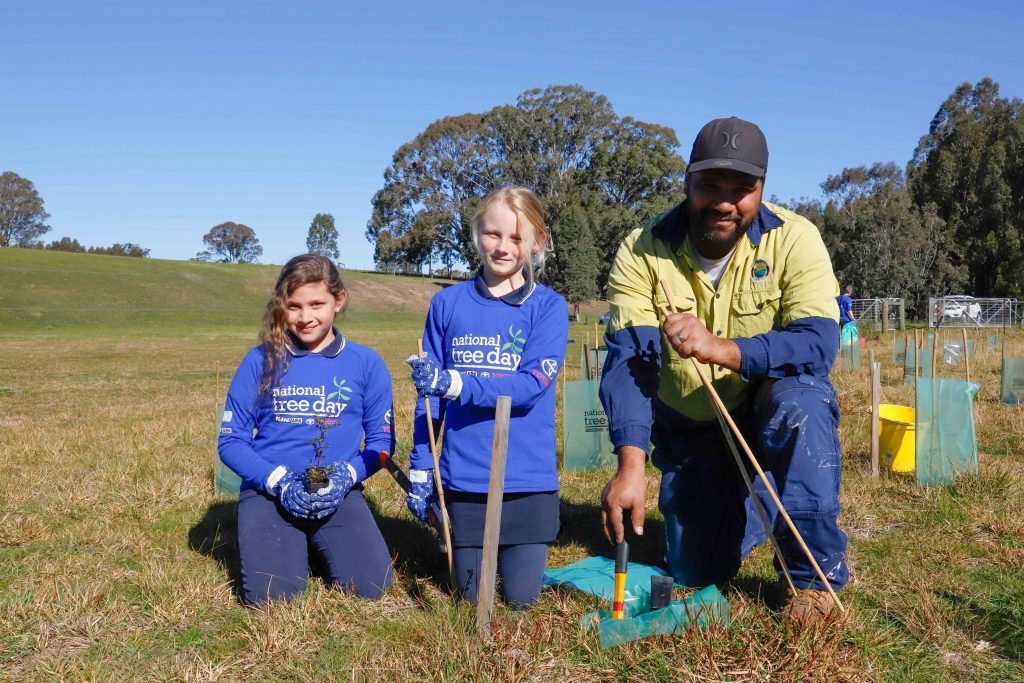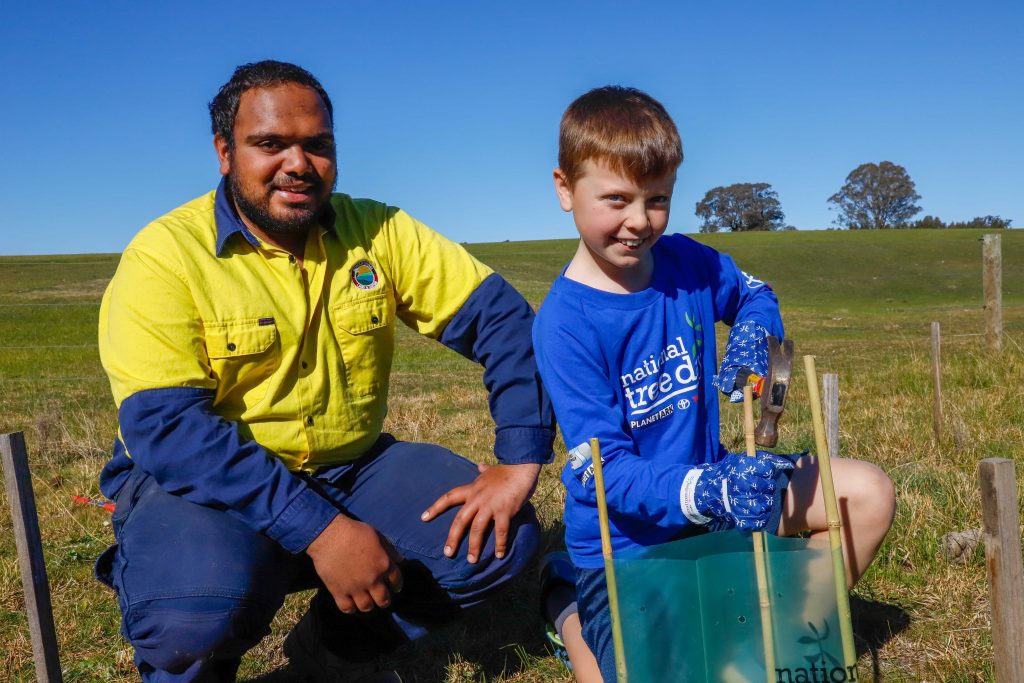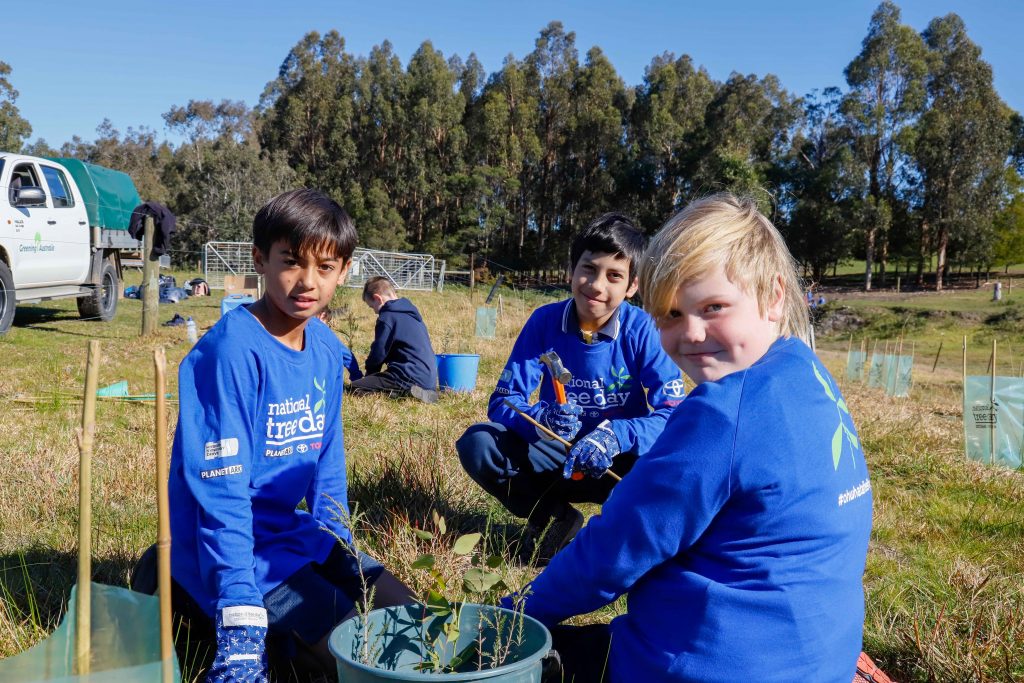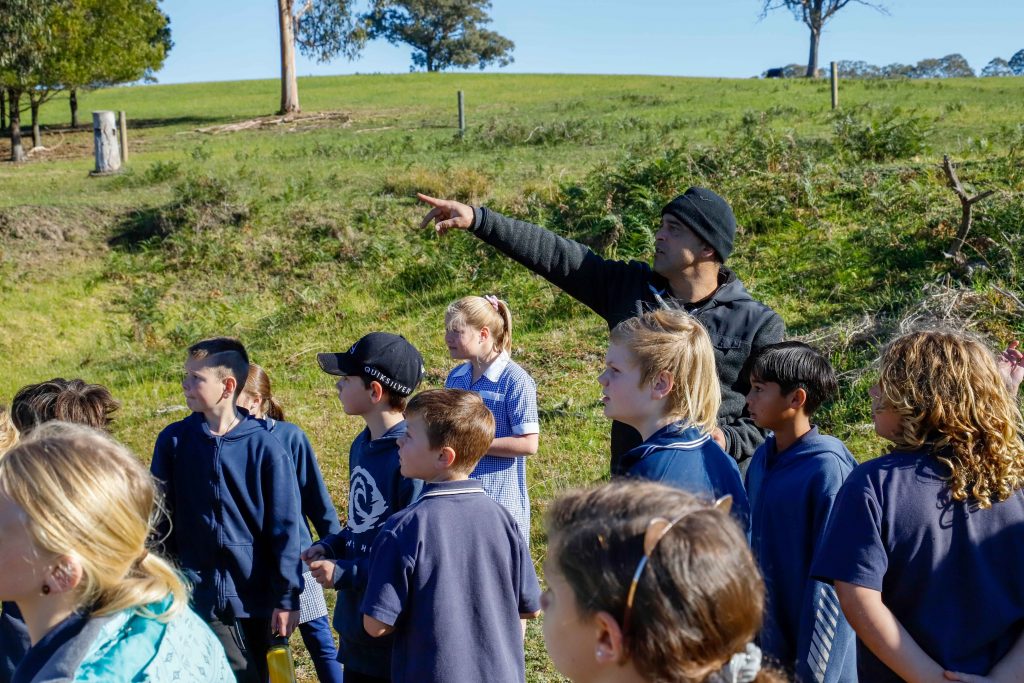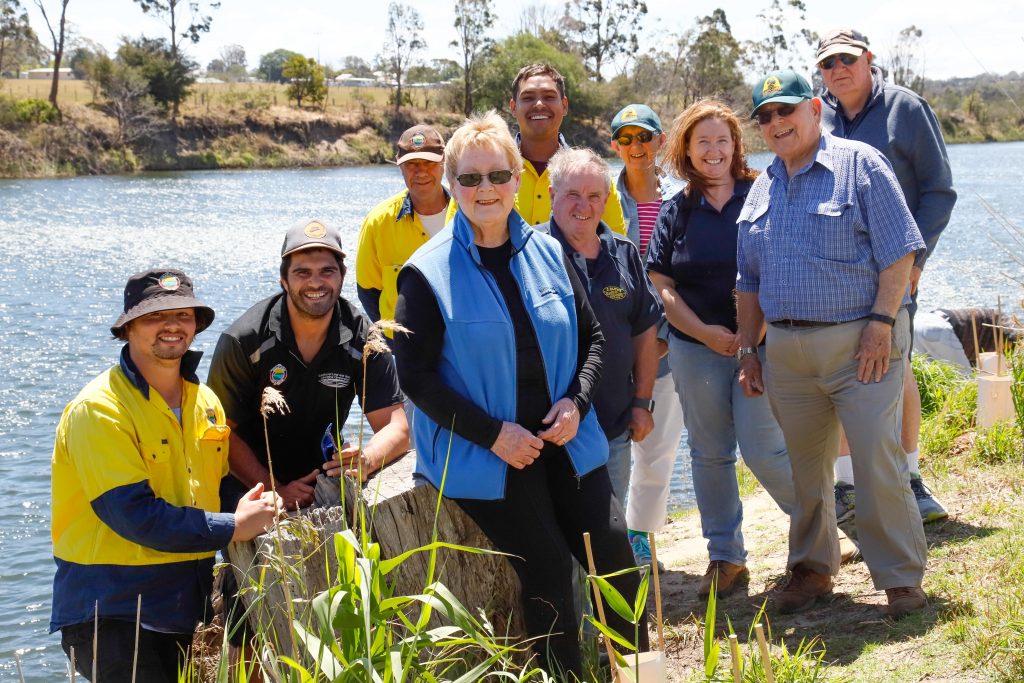
The Twin Rivers Community Group is proving just what can be achieved through hard work and determination, working with a number of partners to improve public access for recreational anglers on the banks of the Tambo River.
In partnership with the East Gippsland Catchment Management Authority, Gunaikurnai Land and Waters Aboriginal Council (GLaWAC), Nicholson River Landcare Group, DELWP and the East Gippsland Shire, has improved the amenity of five popular fishing spots close to Swan Reach.
Graeme Dear, CEO of East Gippsland CMA said, “the project, funded through a Regional Riparian Action Plan Angler Grants from the Victorian State Government is helping community get more involved in waterway works.”
Marion Dawson project managed the works and knows that the Tambo is a very popular spot for recreational anglers targeting bream and understands the importance of a healthy river to attract anglers and the fish they’re looking to hook.
“We’ve been working to keep access to our local fishing platforms clear and accessible while planting native seedlings to improve stability and encourage biodiversity on the riverbanks.” said Ms Dawson.
“It’s been a great effort from everybody and a very positive team environment to work in. We want to thank our partners for all of their support in particular to the GLaWAC crew who have shared their knowledge and to the volunteers who regularly use their water trailers to keep the seedlings alive.”
“A healthier river system means better conditions for fish to thrive and more opportunities for anglers who like to throw a line in.”
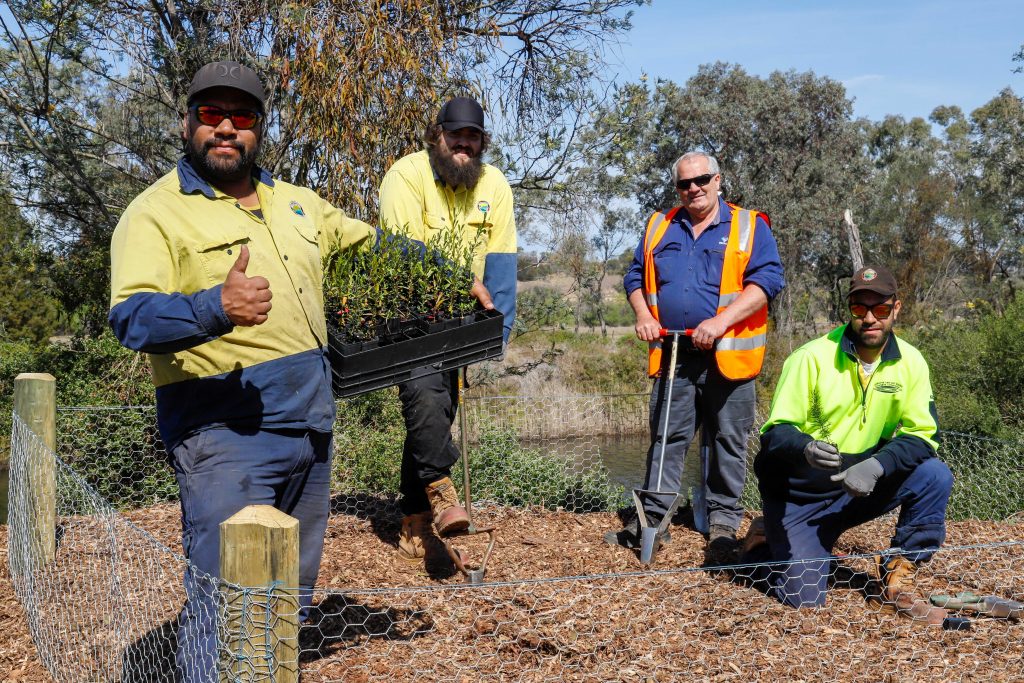
The Gunaikurnai Land and Waters Aboriginal Corporation NRM crew have been working with the East Gippsland Catchment Management Authority to undertake rehabilitation works on the banks of the Mitchell River in Bairnsdale.
Five fenced plots have been created to protect young seedlings from browsing by wombats and rabbits as part of the Lower Mitchell Rehabilitation Project focusing on improving the health of the river from Glenaladale Road to the Princes Hwy Bridge.
Establishing native vegetation will help to stabilise the river bank, reducing the effects of flood damage including erosion and the movement of sediment downstream to the Gippsland Lakes.
This project is funded by the Victorian State Government as part of $222 million committed to improving the health of waterways and catchments in Victoria.
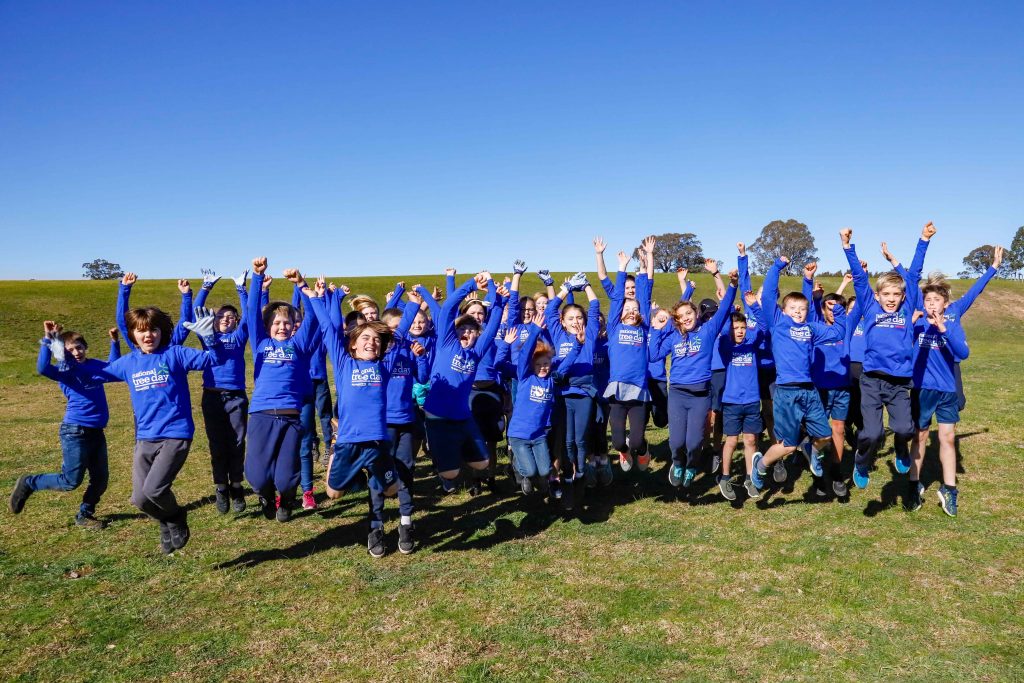
The gloves were on and enthusiasm was high as students from Lindenow Primary School celebrated National Tree Day last week with a visit to the upper reaches of Skull Creek.
Working with the GLaWAC NRM crew, the grade 4’s & 5’s planted over 500 native seedlings in an effort to help restore the 10 km stretch of wetlands near Lindenow.
With the new plants in the ground, the kids learned about the cultural significance of the site with Uncle Alfie Hudson and were excited to find a baby Eastern long neck turtle hatchling with the team from Bug Blitz.
The event was organised by Greening Australia (GA) in collaboration with the East Gippsland Catchment Management Authority with funding provided by the Victorian State Governments ‘Our Catchment, Our Communities’ plan.
Martin Potts, from GA appreciates the significance of being able to foster relationships with the environment from an early age. “These students are learning about the biodiversity and the cultural history of their own backyard. It’s important to give kids an opportunity to do their little bit, to be custodians and bring a little bit of wilderness back.” he said.
Grade four teacher Kate McNab appreciates the connection that these excursions bring to the biological studies being taught in the classroom. “It’s a great environmental activity for the kids to be out amongst the trees and animals that we’re learning about and great to be able to spend some time with Alfie learning about the culture of the area. The baby turtle was just the icing on the cake“

The East Gippsland Catchment Management Authority (EGCMA) hosted members from the DELWP Our Catchments, Our Communities (OCOC) team recently when they visited the region to learn about the progress of two projects funded by the Victorian Government’s $222 million investment to improve the health of the state’s waterways and catchments.
The EGCMA is working together with landholders, Gunaikurnai Land and Water Aboriginal Corporation (GLaWAC), community and partner agencies in the Swifts Creek / Ensay area to deliver a coordinated approach to looking after the Tambo catchment. The works have included fencing off stock access to the Tambo River, controlling weeds and planting native seedlings to encourage revegetation.
Also, at Skull Creek near Lindenow on the Red Gum Plains, Greening Australia is working closely with ten landholders to exclude stock from the creek, control rabbits and plant native seedlings. This project involves GLaWAC who have undertaken a cultural heritage survey on the site while their NRM crew are helping to deliver the weed control and planting. Lindenow and Lindenow South Primary schools have also been regular visitors with multiple excursions to help with revegetation and to learn about the cultural and environmental importance of the waterway.
Luke Murphy from DELWP said “It’s great to see so many community members involved in the projects. It’s nice to be able to visit the region and see the funds put to good use.”
The sun was shining and conditions were calm as the East Gippsland Catchment Management Authority (EGCMA), Gunaikurnai Land and Waters Aboriginal Corporation (GLaWAC) and Parks Victoria hosted a walk, talk and paddle at Corringle Foreshore Reserve last week.
Participants learnt about the joint management arrangements between GLaWAC and Parks Victoria, the cultural significance of the Reserve and the importance that environmental water flows play to the health of the Snowy River.
“Getting out into nature is good for the health and wellbeing of our whole community” said Nicole Thompson EGCMA Water Program Team Leader, “We’d like to thank our partners and all of the community members who helped make this day such a success. Getting people involved in our waterways is a key priority in the Water Plan for Victoria.”
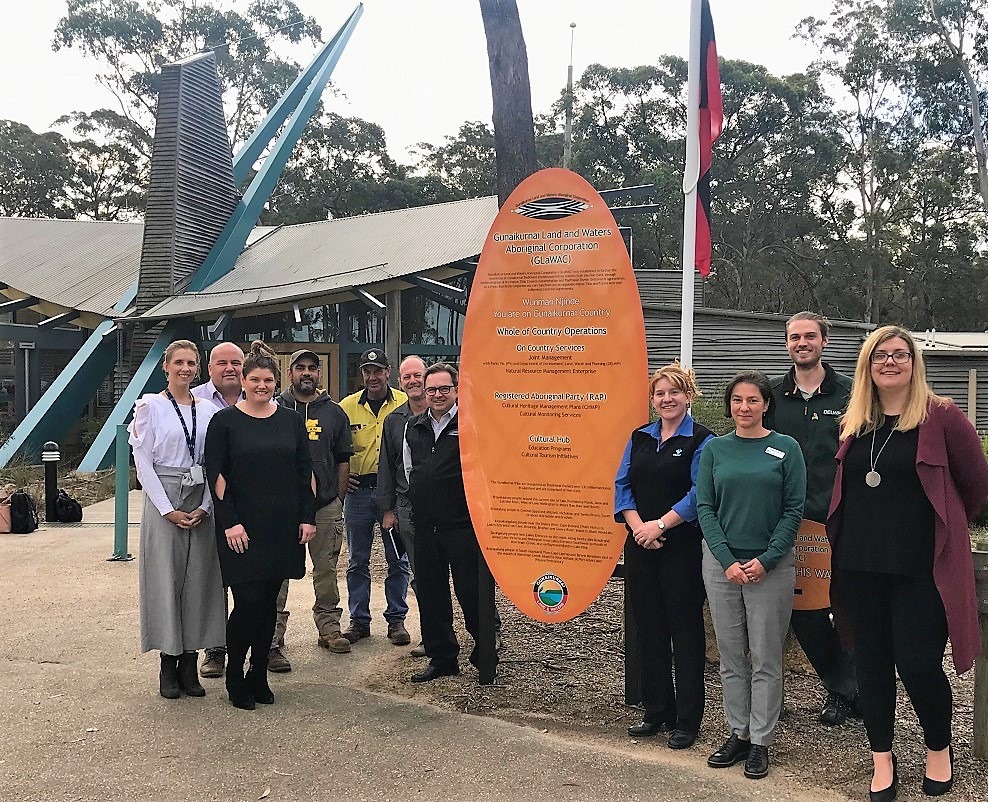
The Gunaikurnai Land and Waters Aboriginal Corporation (GLaWAC) recently hosted staff from 13 Gippsland Environmental Agencies (GEA) as part of the regular GLaWAC-GEA Partnership working group meeting.
The partnership is fostering positive relationships with the Traditional Owners and Aboriginal communities across the land and waters of the region and supporting economic development opportunities.
“We are committed to walking together to share strengths, build opportunities and develop closer working relationships across agencies and the region” said Daniel Miller, GLaWAC General Manager – On Country.

The East Gippsland Catchment Management Authority is offering community members an opportunity to explore the Corringle Foreshore Reserve.
The EGCMA, in partnership with the GunaiKurnai Land and Waters Aboriginal Corporation (GLaWAC) and Parks Victoria, will host a free cultural walk, talk and paddle tour at 10.30am on Thursday 30th May.
Participants will have an opportunity to walk through the Foreshore Reserve and adjoining coastline, learn about the significance of Corringle to the Gunaikurnai people and hear from GLaWAC and Parks Victoria about their joint management arrangements.
Taking to the water, participants will paddle toward the mouth of the Snowy River Estuary to learn about the importance that environmental water flows play to the health of the river system, the surrounding biodiversity and the people who enjoy it.
Lunch and all equipment will be supplied and guests will paddle with the support and guidance of qualified and experienced recreational instructors.
The excursion is suitable for people with no prior paddling experience, but participants need to be reasonably fit and agile to enter the canoes or rafts and complete a 2km walk. It’s open to everyone over the age of twelve, and those under 18 must be accompanied by a supervising adult.
Participants will be required to bring clothing and any personal supplies, and be prepared to get a little wet.
If you would like to join in the fun, please register here from Wednesday 15th May. Numbers will be limited so early booking is advisable.
Please note that this paddle is subject to weather conditions and river flows.

The Gunaikurnai Land and Waters Aboriginal Corporation (GLaWAC) NRM Crew have been working along the banks of the Tambo River, controlling weeds between Battens Landing and Stephenson Bridge.
Working in partnership with the East Gippsland Catchment Management Authority (EGCMA), the works will improve public recreational access to the well-known swimming spots and complement revegetation works being undertaken in the area.
These works are part of a coordinated effort to improve the health of the Tambo River, together with public access and amenity from Swifts Creek downstream to the mouth of the river.
“Our NRM team are proud to be working on country in partnership with EGCMA” said Nigel Pearce, NRM Manager at GLaWAC.
“The Water Plan for Victoria seeks greater involvement of Traditional Owners and recreational users in the management of our rivers.” said the EGCMA CEO, Graeme Dear. “Our strong relationship with GLaWAC provides opportunities to build and share skills and cultural knowledge.”
The project is funded by the Victorian State Government as part of $222 million committed to improving the health of waterways and catchments in Victoria.
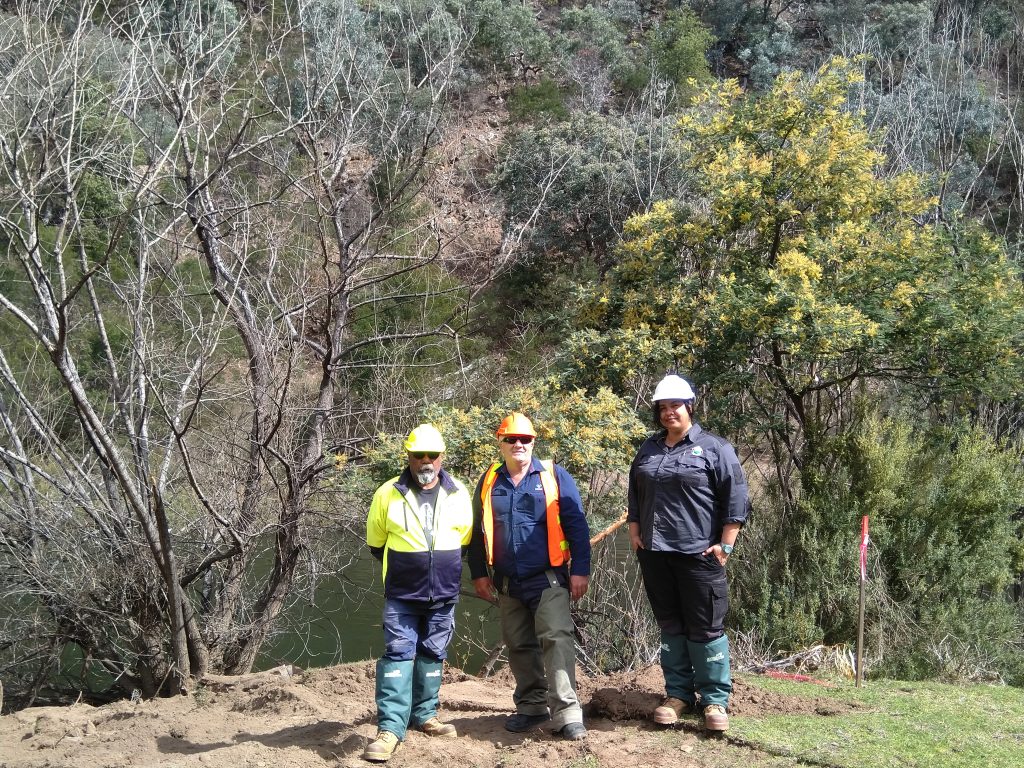
The East Gippsland Catchment Management Authority (EGCMA) has been working with the Gunaikurnai Land and Waters Aboriginal Corporation and local landholders to improve the condition of the Mitchell River Catchment and preserve Gunaikurnai cultural heritage.
On the banks of the Upper Mitchell, 800m of willows has been removed and the banks will be planted with native trees and shrubs to reduce erosion, improve riverbank stability and promote biodiversity. GLaWAC Cultural Heritage Officers Nicky Moffat and Paula Martin visited the site when the initial works got underway to identify the nature of any Aboriginal cultural heritage findings although none were ultimately unearthed.
“Working in partnership with GLaWAC before work starts helps ensure that our activity does not disturb areas of cultural importance.” noted Graeme Dear, CEO of the EGCMA.
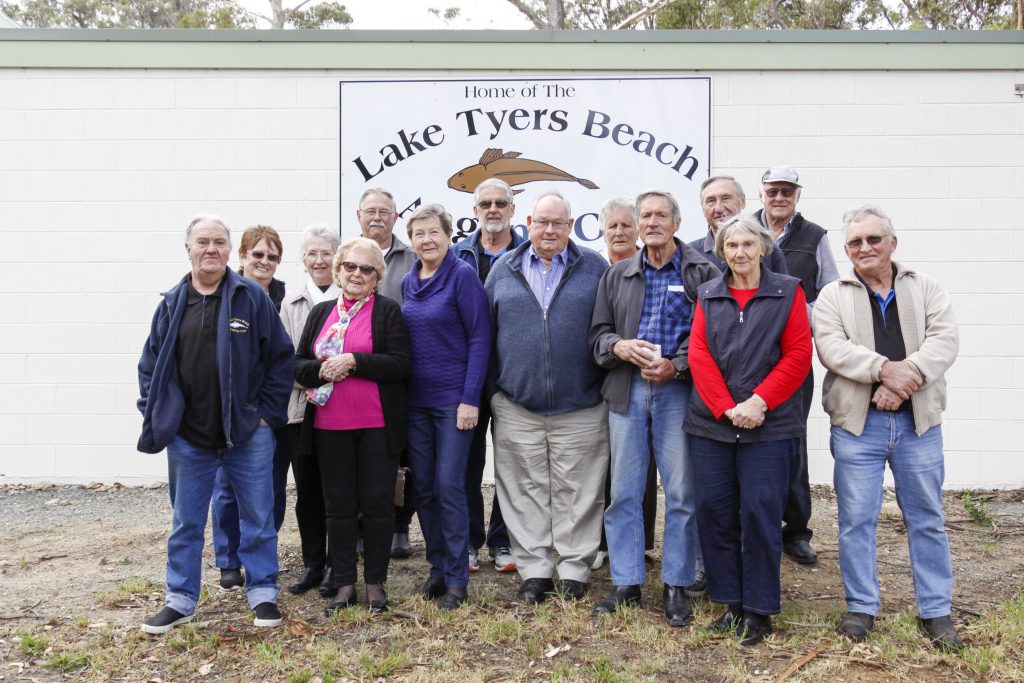
The East Gippsland Catchment Management Authority has been working with a number of its partners to control weeds along the Timbarra River.
Sections of the Timbarra, north west of Buchan, were recently burnt during a bushfire and large areas along the rivers edge are now seeing weeds such as willows and blackberries emerging.
Forest Fire Management Victoria and the Gunaikurnai Land and Waters Aboriginal Corporation (GLaWAC) NRM crew are working to remove weeds, particularly within the popular camping sites in the vicinity.
Further downstream, GLaWAC have also partnered with the Lake Tyers Beach Angling Club in controlling weeds to improve access to popular fishing spots.
These works aim to reduce the extent of weeds along the river, encouraging the regeneration of native vegetation, and to improve access for the local community and visitors alike to enjoy.
“We enjoy a close working relationship with all of our partners.” said the EGCMA CEO, Graeme Dear. “Projects like these are about people working together to improve the health of our waterways for all of the community to enjoy.”
The works are part of the Labor Government’s $222 million investment in improving the health of waterways and catchments, outlined in the Water for Victoria plan.
